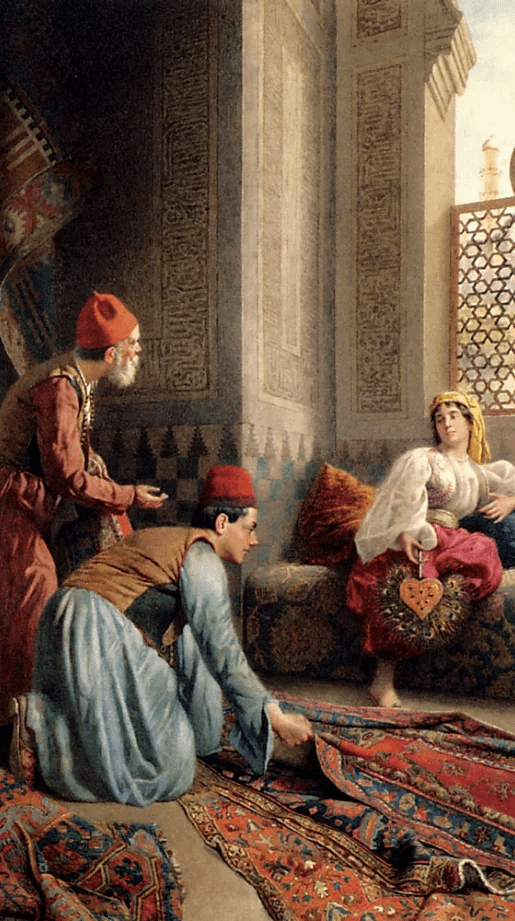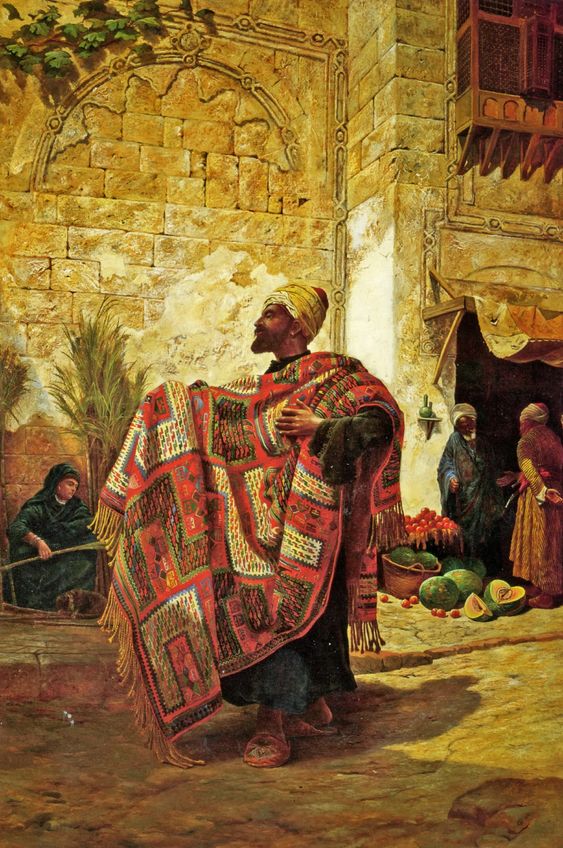How the Silk Road spread Persian rugs across the world
Asia’s most significant development was the Silk Road, which connected China and Europe, providing a vital trade relationship between the East and the West. Cultural exchanges were made through what was not just one but a network of trade routes. Religion, technology, rugs, and silk spread from China to the Western world. Central Asia, through which the Silk Road passed, greatly benefited from the Silk Road as Chinese products were brought to the region. What would eventually become collectively known as the Silk Road began as a series of trade routes linking China to the Middle East.

The opening of these trade routes allowed people at both ends and along its route to enjoy products and goods they had never seen or experienced before. Some of the most essential items traded along the Silk Road were spices, silk, precious stones, raw minerals, and, of course, rugs. These trade routes opened opportunities not only for traders but also for their customers. People began to enjoy a lifestyle that allowed them to expand beyond locally available goods and products. The traded goods became highly desirable and were often a sign of luxury and success.
However, the Silk Road also allowed the economic expansion of the less privileged classes. Now, they can produce and sell their products in a larger global market.

The Silk Road and the Expansion of Persian Rugs
The Silk Road’s trade routes were well established by around 1500. Caravans frequently travelled along these routes, trading and exchanging goods. During the 1500s, the Persian rulers of the Safavid Dynasty saw an opportunity to increase their wealth and the level of export products to the rest of the world.
Rugs from small Persian villages and towns were already valuable at both ends of the Silk Road. Persia was in the middle of the routes, and goods travelling in both directions often had to pass through this area. The Safavid rulers were responsible for expanding the arts and wealth of the Persian Empire.
The Safavid rulers hired some of their best artists to make rugs for export and make their art known. Persian rug weavers and designers produced exceptional-level works often displayed in public buildings and palaces. These rugs, considered valuable works of art, became a highly coveted commodity among the Persian elite and were often given as gifts in negotiations and diplomatic relations.
Many of these fine rugs reached European castles, cathedrals, and wealthy estates through these routes. Persian artists were instructed to establish schools and pass these designs on to rug weavers in small villages. Persian rug weavers were taught to make high-quality rugs with an exquisite aesthetic never seen before.
The Silk Road gave rug manufacturers easy access to a distribution channel eager for everything they could produce. It eventually led to establishing schools and production centres in cities like Tabriz, Isfahan, Kerman, and many other non-Persian weaving centres conveniently located near routes like the Khotan rugs of Eastern Turkestan in present-day China. It marked the beginning of the Golden Age of the Safavid Dynasty and the First Golden Age of the Persian Rug industry.
Importance of the Silk Road today
The name Silk Road was officially used for the first time in 1877 by Ferdinand von Richthofen, who made seven expeditions along the route from 1868 to 1872. The choice of this name derived from the fact that silk was one of the primary commodities traded along these routes.

The possibility of producing goods and exporting them to distant lands was a factor that helped in the expansion of economic development along the trade routes. However, it also allowed artists to expand their creativity by accessing materials such as silk, wool, cotton, and rug dyes that were unavailable locally. It also meant the expansion of cultural exchanges and the possibility of acquiring new techniques and skills. However, in many cases, as with the techniques of the Persian rug centres, it also meant the need to protect their trade secrets.
The Silk Road was the most crucial event in the history of the rug trade. It led to the creation of an extraordinary variety of fine rugs of unsurpassed quality that we know today. Now, you can find Oriental and Persian rugs for almost every taste or style, and it all started with the establishment of the Silk Road’s trade routes nearly two thousand years ago.
We encourage you to appreciate our rug collection’s magnificent colours and designs for your home or office. You can discover the passion for this fantastic work of art just as the first Europeans were attracted when they saw it for the first time. With so many different and unique works of art, it is tough to resist them.

Figalli Oriental Rugs
We do not sell rugs. We bring rare works of art to your home in the form of rugs.
Our services
You are Protected
Copyright © 2023 Figalli Oriental Rugs, All rights reserved. Desenvolvido por Agência DLB – Agência de Marketing Digital em Porto Alegre
